Calandiva Plant – How to Care for Kalanchoe Blossfeldiana ‘Calandiva’

The calandiva plant is a cultivar of the flowering succulent species Kalanchoe blossfeldiana. Calandivas are evergreen perennial plants that produce flowers year after year. The kalanchoe calandiva is a succulent plant with leathery, dark-green leaves, and a mass of showy double flowers that look like roses. Due to the fact it’s easy to care for, the calandiva plant is a popular flowering houseplant.
How to care for Kalanchoe blossfeldiana ‘Calandiva’: The calandiva plant grows best in a sunny location, but protected from direct sunlight. Calandiva kalanchoes need well-draining soil, low humidity, and warm temperatures between 60°F and 85°F (15°C – 30°C). Only water the plant when the soil dries and fertilize occasionally during the growing season.
The calandiva is a double-flowered Kalanchoe blossfeldiana cultivar. Flowering plants in the Kalanchoe genus are native to Madagascar, where they thrive outdoors in partial shade and subtropical temperatures.
Calandiva kalanchoe plants are easy to identify due to their shiny, bushy green foliage and clusters of double flowers. These rose-like flowers have beautiful colors such as pink, orange, yellow, creamy-white, or red shades and can last for up to six weeks. Growing in pots, calandiva plants grow to between 12” and 18” (30 – 45 cm) tall and 4” to 20” (10 – 50 cm) wide.
You can buy calandiva plants in flower shops, garden stores, grocery stores, or nurseries. In temperate climates, people buy calandiva kalanchoe as flowering evergreen houseplants. In tropical climates, calandiva cultivars are stunning border plants in sunny gardens.
This article is a complete guide to kalanchoe calandiva care. As well as tips on caring for this colorful indoor plant, you’ll find out how to resolve many growing issues that can develop with this potted succulent.
Calandiva Flowers

Calandiva is a succulent that has beautiful double flowers that look like little roses and it comes in various colors
The stunning clusters of double flowers are the most attractive feature of calandiva houseplant. When in full bloom, a calandiva plant looks like a small rose bush with miniature roses. Calandiva flowers come in a wide array of colors—shades of pink, red, white, orange, yellow, and lavender.
Calandiva plants start producing flower buds in late fall and winter. Calandiva usually blooms in late winter or early spring. The flowers last for 6-8 weeks. The showy, colorful flowers grow in clusters at the end of stems, creating an attractive flowerhead.
After calandiva flowers begin to fade, you should pinch off the flowers to encourage more to appear. Deadheading a calandiva helps to ensure that flowers come back year after year.
How do I get my Calandiva to bloom?
To encourage calandiva kalanchoes to produce flowers, you should reduce watering and light. Put the calandiva pot in complete darkness for 14 hours a day and stop watering it. Continue doing this for six weeks to encourage your plant to bloom. When buds appear, move the pot to a bright location and care for the succulent as usual.
To encourage a calandiva to keep blooming for as long as possible, give it plenty of bright indirect light. Placing a kalanchoe on an east- or west-facing windowsill is ideal. During winter, when the calandiva blooms, putting the pot on a south-facing windowsill should help keep the plant flowering for a long time.
When it comes to stimulating a calandiva to flower, it’s vital to remember one thing: keep the flowering succulent away from direct sunlight in spring and summer to prevent sun scorching.
Why My Calandiva Isn’t Flowering?
A calandiva plant won’t flower if it doesn’t get a rest period. Continual bright light throughout the year usually means the calandiva kalanchoe fails to rebloom and produce flowers. To get your calandiva to flower, make sure it gets long periods of darkness and little water for a few weeks.
After about six weeks of ‘resting,’ your calandiva kalanchoe should start producing flowering buds. Transfer the plant pot to a bright location to enjoy its stunning colorful shades of pink, red, yellow, white and orange.
How to Care for Kalanchoe Calandiva
Let’s look in more detail at calandiva kalanchoe care tips to ensure your plant flowers regularly, and stays free from disease or pests.
The three main calandiva kalanchoe care requirements are:
- Plenty of bright indirect light
- Well-draining soil
- Deep watering whenever the soil dries out
Calandiva Plant Light Requirements
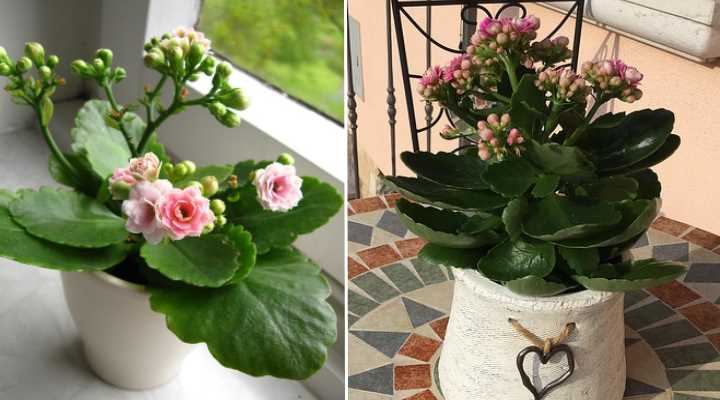
Grow your calandiva succulent in a bright location that is protected from direct sunlight
Calandiva plants thrive in bright, indirect light. The best place for growing a calandiva kalanchoe is near a sunny window where it can get plenty of natural light. During hot summers, protect the succulent foliage from the sun’s rays. Aim for between six and eight hours of light daily.
Calandiva plants—like most succulents and cacti—need plenty of light to thrive. Adequate light ensures not only long-lasting blooms but also prevents leggy growth. When growing in ideal conditions, calandivas have a bushy, rounded growth with multitudes of colorful flower clusters.
A calandiva kalanchoe that becomes leggy is usually a sign of low light. Pinching off straggly stems can help to restore the plant’s bushy look. Also, move the calandiva pot to a sunnier location to prevent legginess and weak growth.
Getting lighting right for growing calandiva houseplants also means allowing the plant to rest. As the days get shorter in the fall, the calandiva enters a dormant phase. To encourage flowers, put the plant in a dark location for 14 hours a day and hold off watering. After six weeks, the calandiva should be ready to produce showy flowers.
Best Soil for Growing Calandiva Indoors

The best soil for growing calandiva is a well-draining potting mix for cacti
Calandiva kalanchoes thrive in a cactus potting mix that has excellent drainage. To create the ideal potting medium for these flowering succulents, combine potting soil, cactus mix, and perlite. The organic matter in the soil helps provide nutrients. The addition of perlite allows water to drain quickly.
Most succulents and cacti—including calandiva plants—can survive in poor soil. So, the most critical soil requirement is a light-aerated, sandy soil that doesn’t retain much moisture.
One of the most common reasons why calandiva plants are dying is root rot caused by too much moisture in the soil. Waterlogged, soggy soil cause roots to decay quickly, and you may notice that the green, leathery calandiva leaves become mushy, shriveled, and discolored.
Some excellent soil amendments for calandiva to improve drainage include the following:
- Perlite
- Bark chips
- Charcoal pieces
- Pea gravel
- Coarse horticultural sand
- Pumice
How Often to Water a Calandiva

Water your calandiva only when the soil dries out
A calandiva plant needs watering as often as the soil dries out. During warm spells, you may need to water a kalanchoe as often as once a week. In the winter, a calandiva plant needs less frequent watering – maybe as little as every six to eight weeks.
The general rule when it comes to watering a calandiva is this: only water when the top part of the soil is dry.
To water a calandiva, it’s vital to irrigate the soil thoroughly. This type of watering means drenching the soil until the water drips out the bottom. Watering houseplants this way ensure the roots are adequately hydrated and stay healthy.
To know if it’s time to water your succulent houseplant, poke your finger into the potting mix. If the soil is dry, you can thoroughly water the plant. The next time you should water the plant is when the soil dries out.
Calandiva kalanchoe plants are on the list of drought-tolerant houseplants. So, forgetting to water your succulent occasionally is better than over-watering.
Temperature Requirements for Growing Calandiva Plant Indoors
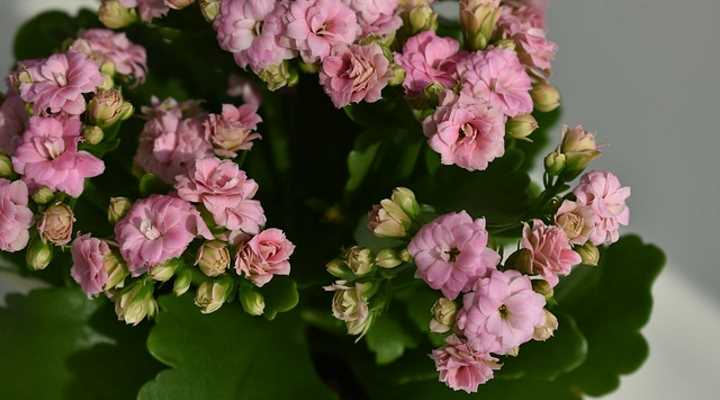
To properly care for your Kalanchoe Blossfeldiana ‘Calandiva’, keep it in an average room temperature
Calandiva plants thrive in average household temperatures. As long as the room temperature is kept even, kalanchoes plants grow well in a temperature range of 60°F to 85°F (15°C – 30°C). Just make sure to protect these tropical plants from cold drafts or hot radiators.
Calandiva kalanchoe plants are ideally suited for growing outdoors in USDA zones 10 and 11. Preferably, average temperatures outside shouldn’t drop below 60°F (15°C). These tropical succulents can survive short spells around 50°F (10°ׄC). However, frost will kill the calandiva plants, and they should not be outside below 40°F (4°C).
The colorful flowering succulent makes for great low-growing or border plants in warm zones. Grow in your yard where the calandiva plants get sun for most of the day.
If you live in temperate climates, you can take potted calandiva plants outside in the summer. Place the pot in a bright location with partial shade. When the nighttime temperature drops to around 50°F (10°C), bring the calandiva back indoors.
Humidity Requirements for Calandiva Plants

Calandiva plants grow well in low humidity conditions with good air circulation
Calandiva plants need to grow in dry environments and don’t grow well in moist air. Household humidity levels are ideal for kalanchoe plants as rooms tend to have drier air than outside. To help calandiva houseplants thrive, keep humidity low, and ensure proper air circulation.
Because most species of kalanchoe don’t need high humidity, you never have to mist calandiva leaves.
You can tell if high indoor humidity is affecting calandiva growth by looking at the plant’s leaves. High air moisture can cause powdery mildew on leaves. This fungal plant disease causes white powdery spots on the shiny green calandiva leaves. Although harmless, powdery mildew can make the plant look sick and unattractive.
Fertilizing a Calandiva Potted Plant

Calandiva plants don’t need much feeding and shouldn’t be fertilized during fall and winter
A calandiva kalanchoe doesn’t require much feeding. Calandiva are slow-growing succulent plants that are relatively self-sufficient. If necessary, you could apply a diluted, balanced houseplant organic fertilizer every four weeks during the growing season—from spring until the end of summer.
If you care well for your calandiva, you probably only have to fertilize it twice a year. Feeding once in spring and then in mid-summer should help keep your calandiva succulent plant healthy with vibrant growth.
Pinching Calandiva Plant Leaves and Stems
Pinching off straggly stems and dead flower stalks promotes calandiva growth. Always remove stalks after they have finished flowering. This light pruning ensures that a calandiva reblooms. All you need to do is use sterile scissors to snip dead flower stalks at their base.
Pinch off any leggy growth you notice on the bushy calandiva plant. Pruning long or tall stems helps to retain the plant’s attractive round growth. Also, light pruning helps to encourage vigorous growth. After pinching long stems, move the calandiva to a sunnier location to prevent legginess in the future.
Repotting Calandiva Plants
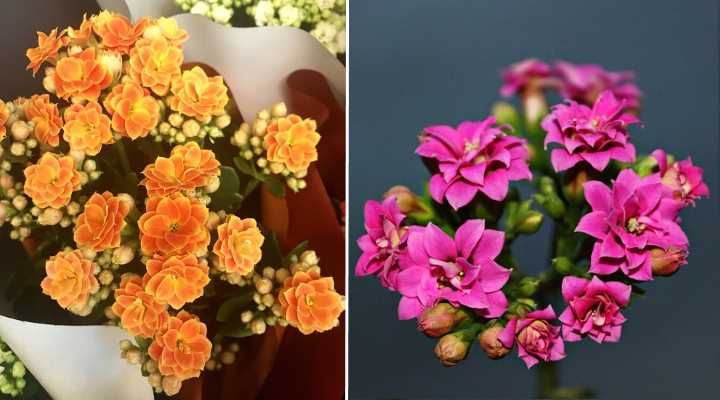
Calandiva succulents don’t need to be repotted often
Due to its slow growth, you rarely need to repot a calandiva kalanchoe. If the succulent has become too big for its current pot, you should repot it in the spring. Transferring to a larger container give the roots space to grow and continue flowering every year.
To tell if you need to repot a calandiva, look for roots poking out the pot’s drainage holes. Also, water that starts to drain slowly could be a sign that the plant is rootbound. In any case, it’s time to repot the plant and refresh the potting mix.
Repotting a calandiva is similar to any type of houseplant. To repot a calandiva, choose a suitable pot—preferably terracotta for succulents—that is one size up. Remove the calandiva plant carefully from the container, shake off excess dirt, and untangle the roots. After snipping off dead roots, transfer the plant to a new pot with fresh cactus mix.
Propagating Calandiva
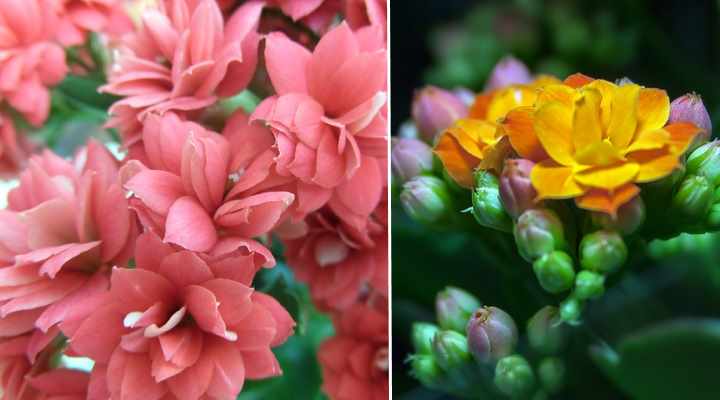
You can propagate your calandiva plant by stem cuttings or root division
Calandiva propagation is by stem cuttings or root division. The easiest way to propagate a calandiva is by cutting off a 4” (10 cm) piece of a healthy stem just below the node. Remove the leaves from the lower 2” (5 cm) and allow it to dry for five days to callous. Plant in a pot with light, moist well-draining soil.
It’s vital to care for propagated calandiva cuttings. You should put potted cutting in a bright place and cover it with a plastic bag to help increase humidity. Mist the soil regularly so that it’s moist. After three weeks, the cutting should be rooted, and you can transfer the pot to a bright location and care for the calandiva as usual.
Propagating a calandiva by root division is best done when repotting the succulent in spring. After removing the plant from the pot, divide the roots into two or three sections, ensuring there are one or two healthy stems and a few leaves on it. Repot the new calandiva plants in individual containers that contain light, moist potting soil.
Pests Affecting Calandiva Growth
Calandiva kalanchoe cultivars are hardy flowering succulents, and houseplant pests rarely bother them. If you do notice signs of pests, use a neem oil solution to get rid of the bugs. Alternatively, you could wipe the affected leaves with insecticidal soap to remove the little critters.
Some types of pests that can affect calandiva plants are any of the following:
- Spider mites—Look for spider mites by checking for webbing under the shiny green foliage or between stems and the plant’s stalk.
- Aphids—To spot aphids, look for tiny pear-shaped insects crawling on the calandiva stems or under the leaves.
- Mealybugs—Signs of mealybugs include a fuzzy white growth on foliage resembling cotton wool or small white creatures crawling under leaves.
Diseases Affecting Calandiva Growth
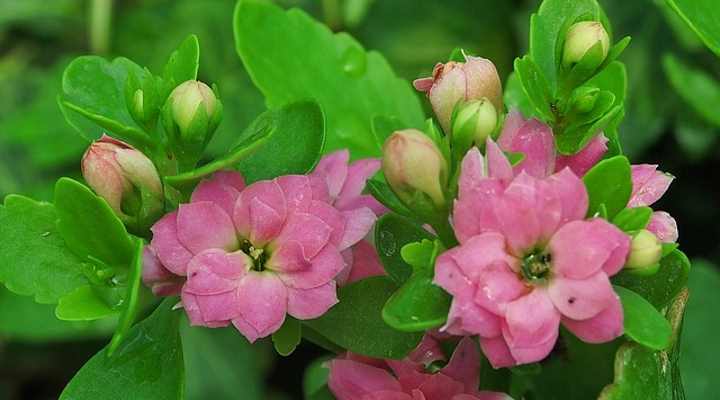
Over-watering and high humidity can cause calandiva kalanchoe houseplant to be susceptible to diseases
The most common disease to cause calandiva plants to die are root rot. To prevent root decay, always allow plant soil to dry between watering. Each time before watering your calandiva, check for signs of moisture. If in doubt, wait a few days before checking again to see if the plant needs water.
Powdery mildew is another fungal disease that can affect your calandiva plant’s appearance. If you notice dry white powdery patches on the silky leaves, try to increase air circulation around your plant.
If your calandiva looks like it’s dying due to over-watering, you may need to replace the potting medium with a fresh, sterile one.
Are Calandiva Plants Poisonous?
Calandiva kalanchoe plants are toxic to cats, dogs, and other animals. The American Society for the Prevention of Cruelty to Animals reports that ingesting kalanchoe leaves can cause severe digestive upset in pets.
FAQs about Growing Kalanchoe Plants
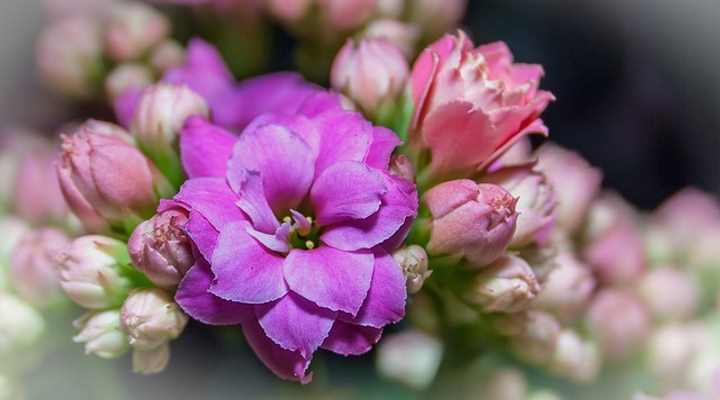
Calandiva are relatively low maintenance plants and easy to care for houseplants
Although the calandiva is a low maintenance flowering succulent houseplant, some issues can affect its growth.
How long do kalanchoe calandiva plants live?
Calandiva kalanchoe plants will thrive for many years if you care for them properly. Getting the lighting conditions right ensures that the plant’s blooms last for six weeks or longer. Also, giving the plant time to rest in dark conditions helps the calandiva to bloom throughout the year.
Why are there brown spots on calandiva kalanchoe leaves?
A buildup of mineral salts is often to blame for brown patches appearing on kalanchoe leaves. To help revive your plant, flush the soil with running water for a couple of minutes. Cut off leaves with brown spots and don’t fertilize the plant for at least a few months.
Why are calandiva plant leaves withered and discolored?
Limp or withered calandiva foliage is usually due to a lack of sunlight or watering issues. Make sure the calandiva plant gets at least six hours of light daily. Only water the plant when the soil has partially dried and give the roots a thorough, deep watering.
Related articles:
